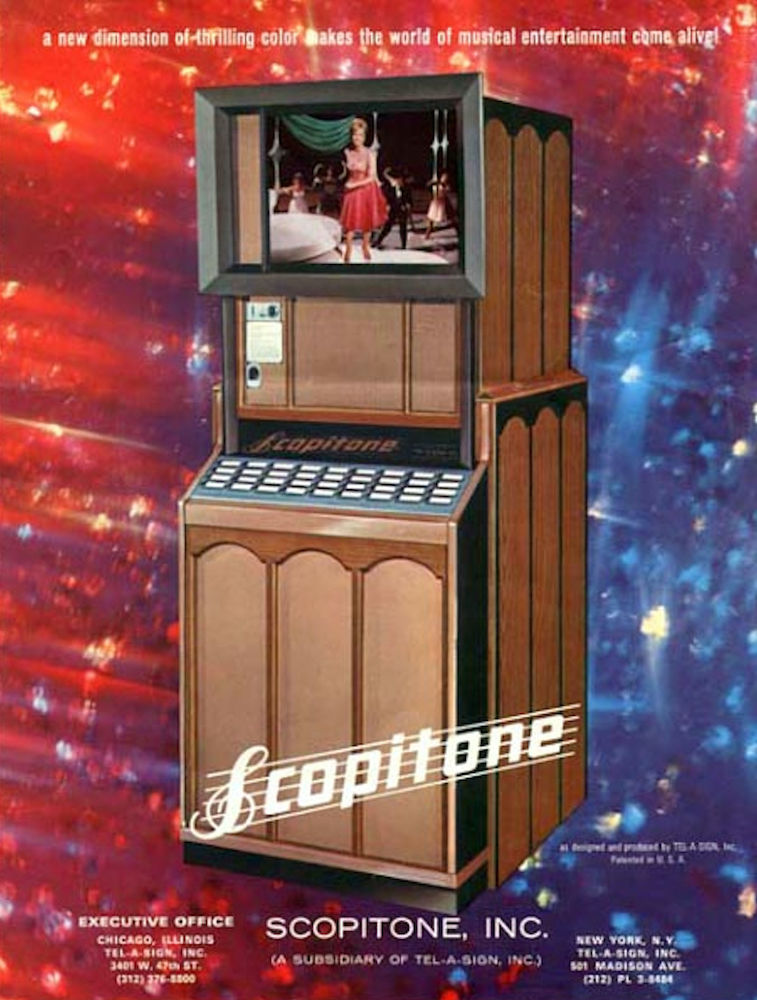Twenty years before MTV aired its first music video, people were making short films of bands and singers performing their hits. The ones from France featured A-list acts and production values. Italy gave us the best film documentation of Screaming Lord Sutch. The American one that has best survived the test of time is Nancy Sinatra’s “These Boots Are Made for Walking.” Although the American films were filmed in Techni-color (which tends to not fade over time like other stocks) the production values were often cheap. They usually featured dancers in bikinis who might or might not be dancing in sync with the music. How did these films come to be?
In the late 1950s a new kind of jukebox started showing up in French cafes and clubs. These jukeboxes (called Scopitones, later rebranded for American audiences as Colorama) showed films of musical acts on a screen the size of a modern laptop. Because these machines were placed where young people congregated, the acts they featured were the actual hitmakers in films that were geared toward thoughtful music fans. We have these machines to thank for the existence of high-quality films of Serge Gainsbourg, Johnny Hallyday and Françoise Hardy. When the Mafia (purportedly) brought these jukeboxes to America, they situated them in men’s clubs, where the music of the day mattered less than the jiggling assets of the dancers. Most of the American titles were filmed between 1965 and 1968. The most prestigious rock acts to be recorded were Procol Harum and The Moody Blues. Most of the other acts were cover bands and B-listers. One of the most fondly remembered performances is “The Web of Love” sung by actress/model Joi Lansing. The number is performed inside a spider web and a cannibal’s cook pot. It has become a YouTube staple. In fact, the gonzo manner in which the American musical numbers were recorded caused Susan Sontag to include them in her canon of camp.
Film jukeboxes actually have a longer history in the US. In the early 1930s there was a technology called Pan-O-Rams. It was a sort of visual jukebox that featured hot jazz films. A key difference with these was that all of the films were spliced into one long loop, and the film for your coin was whichever film was next. It is estimated that about 1000 to 1500 Scopitone machines made it to the United States. Most of the ones that survived got repurposed. There are currently machines in the visitor center at NASA. As of this writing, a working machine fully stocked (36 films) is being offered on eBay for $7500. There is a huge gray market in DVDs of old Scopitone films, and new titles show up on YouTube almost weekly. There is such a specific aesthetic associated with these films that artists making videos today will ape them for a carefree ’60s retro feel. It is currently estimated that about 72 titles were made in the United States. When a new title shows up in a collector list, or on YouTube, there is the sense of occasion that is often caused by the discovery of a lost silent film in a Norwegian attic.


